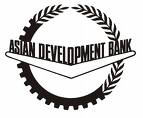Multilateral development banks (MDBs) now work with large investors to ensure that the economic systems in poor countries are conducive to profitable foreign investment. Having abandoned government stimulation of these economies as a development strategy, they depend on this private investment to aid development and economic growth in poorer countries. This is aided by conditions of loan of the World Bank and the International Monetary Fund (IMF) which reinforce the Washington Consensus.
Imposing such conditions on nations ‘undermined their national sovereignty’ and the policy prescriptions of foreign bureaucrats overrode any democratic decisions made by elected governments. The first nation to feel their force was Mexico.
Following the onset of the debt crisis in 1982, when the Mexican government threatened to default on its $US80 billion debt, the World Bank and the IMF focused on ways to ensure that debt would and could be repaid by debtor nations and to protect foreign investments in those countries.
Reference:
p. 48-50, 53.
Mexico had adhered to the Washington consensus, reducing government expenditure, controlling wages and prices, and privatising state-owned enterprises. As in other countries where the formula was implemented, the rich got richer, the poor got poorer and the middle-class shrunk. Mexico was transformed ‘from an exceptionally stable Latin American country to one facing a highly problematic future’ and the promised gain of economic growth was not realised.
When Mexico again threatened to default on its international loans in 1994, the US government facilitated a rescue package that included $20 billion worth of loan guarantees from the US and an emergency IMF loan of $18 billion. It was the most expensive rescue that had ever been carried out. It was considered necessary to prevent stock market crashes in other Latin American countries; to protect US investments in Mexico; to protect the North American Free Trade Agreement (NAFTA); and most importantly to prevent the collapse of one of the show cases of free market reforms:
It was the prime site for the American project of engineering the free market through the world. Since the early 1980s it had a political elite obedient to the transnational financial organizations in which American free-market doctrines were institutionalised.
The World Bank imposed structural adjustment programmes (SAPs) on countries seeking to reschedule their debts or get new loans. These programmes required that borrowing countries adopt austerity measures such as cutting welfare spending and lowering wages as well as a number of free market policy prescriptions aimed at opening up developing economies to foreign investors including: the removal of restrictions on foreign investment; lowering barriers to imports; devaluing the local currency; raising interest rates; cutting subsidies for local industries; and privatization of state enterprises. By the early 1990s structural adjustment programmes had been introduced into nearly 80 developing countries at the instigation of the World Bank.
Like the World Bank, the IMF imposes conditions on countries borrowing money to ensure they are able to repay the loans, this is called ‘conditionality’. In 1987, because the earlier IMF conditions were not increasing the ability of debtor nations to repay their loans, the conditions were increased ‘to include structural measures—such as price and trade liberalization, privatization, and a range of policies touching on economic governance’. Although nations could in theory say no to the IMF, it would mean not only that IMF loans were cut but it would discourage foreign investment and other loans because so many companies and institutions looked to the IMF to give countries the stamp of approval.
The IMF conditions became a standard that other aid agencies used. Countries that satisfied IMF criteria were eligible for aid from these other agencies: ‘The Fund therefore serves as a gatekeeper to official loans and aid and has far more power than the funds it provides directly would suggest.’ The acceptance of IMF policy prescriptions also gives ‘the green light’ to foreign investment and loans from commercial banks.
 Like the World Bank and the IMF, other development banks have moved towards policy-based lending. The Asian Development Bank (ADB) is an example of the development banks that have moved away from ‘their traditional emphasis on providing low cost finance for public sector projects’ and ‘protection of infant industries, a strong regulatory role for the state and mercantilist trade’. Instead ADB has aligned itself with the World Bank/IMF free market model, ‘providing strategic policy advice, policy-based lending, support to the private sector and mobilizing private capital flows to developing countries’. ADB loan conditions have increased in recent years and it is increasingly supporting private sector projects.
Like the World Bank and the IMF, other development banks have moved towards policy-based lending. The Asian Development Bank (ADB) is an example of the development banks that have moved away from ‘their traditional emphasis on providing low cost finance for public sector projects’ and ‘protection of infant industries, a strong regulatory role for the state and mercantilist trade’. Instead ADB has aligned itself with the World Bank/IMF free market model, ‘providing strategic policy advice, policy-based lending, support to the private sector and mobilizing private capital flows to developing countries’. ADB loan conditions have increased in recent years and it is increasingly supporting private sector projects.